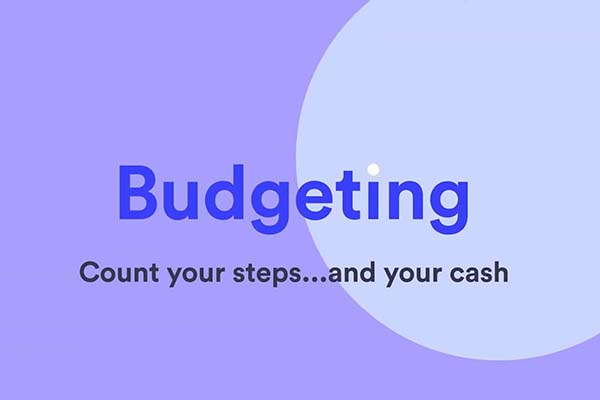Financial Fitness for Real Life
Budgeting: Count your Steps…and your cash
Count your steps … and your cash!
Staying physically fit is a balancing act. You want to get those steps in every day. You really do! But the only way to make that happen is to find a way to work them into your routine.
Even if that means power walking around your living room.
Budgeting is the same way. The trick to healthy budgeting is to figure out a plan that works with your lifestyle—and your wallet. Because a plan you can’t stick to is no help at all.
These two quick, easy budgeting systems are a great way to start. They’re simple to follow, and they can work in just about any financial situation.
Ready? Let’s go!
1. 50/30/20: The interval training of budgeting
What’s 50/30/20 budgeting? It goes like this:
- Spend 50% of your income on things you need
- Spend 30% on things you want
- Put 20% toward savings and spending off debt
Let’s walk through it.
Step 1. 50% on needs
Make a list of all the things you have to spend money on every month. (No, Netflix doesn’t count.) Your list should include things like:
- Rent
- Electricity
- Water
- Car insurance
- Essential groceries
In a 50/30/20 budget, the total of these monthly “have-to” bills should be about half your monthly income. (If it’s more, don’t worry. We’ll cover that in a minute.)
Step 2. 30% on wants
Then 30% can go toward anything you want, from Netflix to artisanal tacos. (Mmmmm, tacos!)

Step 3. 20% on savings and debt
The last 20% of your monthly income can go toward savings or paying down debt.
If your “have-to” list added up to too much, take any of those needs that are actually debt and move them into this category—things like car payments and student loan payments.
Once you’ve paid them off, you can put that money into your savings instead. Way to go!
Step 4. Customize it
If your needs are still adding up to too much, see if there’s anywhere you can cut back. Try things like shopping for lower insurance rates. Or buying less expensive grocery brands and moving that expensive wine to your 30% “wants” list. Small changes can go a long way.
It might take some adjusting, but this is a great way to start managing your money. Still, if you’re not sure it’s a good fit, let’s look at the next one!
2. Pay Yourself First: The reverse budget
Why is “pay yourself first” called a reverse budget? Because it starts off where most budgets end—with your savings!
Step 1. Squirrel away some savings
This budgeting system might feel a little backwards, but it’s super easy. You actually start by deciding how much you think you can put toward your savings out of every paycheck.
Then, whenever you get paid, transfer that amount into your savings first, so it’s not in your main account anymore. Or use a financial app to “hide” it away without actually moving it.
After you “pay yourself first,” you can use whatever’s left to pay down existing debt, like student loans, then take care of the essentials, like your rent.
Once that’s done, you can use the rest for anything you like! When your account starts getting low, hold off on splurging until that next paycheck comes in.
Step 2. Customize it
No budget is one-size-fits-all.
Maybe you get a monthly paycheck, maybe you get paid every two weeks, or maybe your income changes based on how much you work.
That’s okay! With a little adjusting, this budget can work for anyone.
If you don’t get regular paychecks, try putting 20% of any paycheck into savings. Or make a simple rule for yourself: squirrel away 10% if the check is under a certain amount, 20% if it’s higher.
Personalize it however you need to until it works. That way, you’ll stick with it!
Like any fitness plan, adjust as needed, and don’t give up
If your first attempt at budgeting isn’t working out like you hoped, that’s okay! Experiment to see what works for you, and don’t be discouraged.
Like any new fitness routine, it might take some adjusting until it works well for you. And you should also expect your plan to change over time.
After all, you get stronger as a new workout plan trains your body, right? Budgeting plans work the same way. Your money can do more as your new financial fitness plan whips it into shape!
If you need more help, or if you want to dig deeper into financial planning, consider a financial app to guide you as you grow.
For more tricks, tools, and tips on budgeting, check out simplifimoney.com or download the Simplifi by Quicken app on the iTunes App Store or the Google Play Store.
Quicken has made the material on this blog available for informational purposes only. Use of this website constitutes agreement to our Terms of Use and Privacy Policy. Quicken does not offer advisory or brokerage services, does not recommend the purchase or sale of any particular securities or other investments, and does not offer tax advice. For any such advice, please consult a professional.



